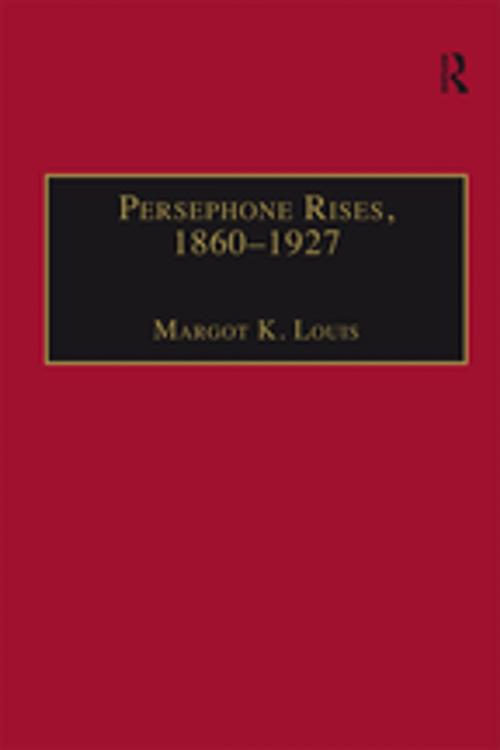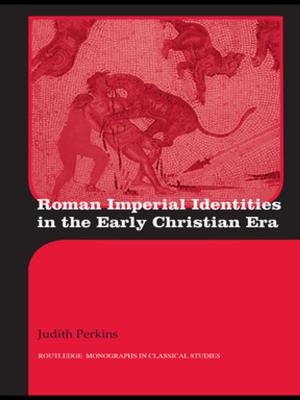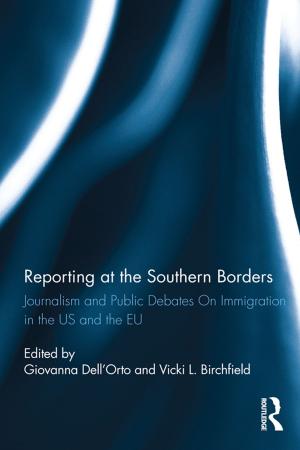Persephone Rises, 1860–1927
Mythography, Gender, and the Creation of a New Spirituality
Fiction & Literature, Literary Theory & Criticism| Author: | Margot K. Louis | ISBN: | 9781351912013 |
| Publisher: | Taylor and Francis | Publication: | December 5, 2016 |
| Imprint: | Routledge | Language: | English |
| Author: | Margot K. Louis |
| ISBN: | 9781351912013 |
| Publisher: | Taylor and Francis |
| Publication: | December 5, 2016 |
| Imprint: | Routledge |
| Language: | English |
Over the course of the nineteenth century, the figure of Persephone rapidly evolved from what was essentially a decorative metaphor into a living goddess who embodied the most spiritual aspects of ancient Greek religion. In the first comprehensive survey of the Persephone myth in English and American literature of the nineteenth and early twentieth centuries, Margot Louis explores the transformation of the goddess to provide not only a basis for understanding how the study of ancient history informed the creation of a new spirituality but for comprehending the deep and bitter tensions surrounding gender that interacted with this process. Beginning with an overview of the most influential ancient texts on Persephone and references to Persephone in Chaucer, Shakespeare, Milton, and Romantic period writing, Louis shows that the earliest theories of matriarchy and patriarchal marriage emerged in the 1860s alongside the first English poems to explore Persephone's story. As scholars began to focus on the chthonic Mystery cults, and particularly on the Eleusinian Mysteries of Demeter and Persephone, poets and novelists explored the divisions between mother and daughter occasioned by patriarchal marriage. Issues of fertility and ritual resonate in Thomas Hardy's Tess of the d'Urbervilles and Willa Cather's My Antonia, while the first advance of a neo-pagan spirituality, as well as early feminist critiques of male mythography and of the Persephone myth, emerge in Modernist poems and fictions from 1908 to 1927. Informed by the latest research and theoretical work on myth, Margot Louis's fascinating study shows the development of Victorian mythography in a new light; offers original takes on Victorian representations of gender and values; exposes how differently male and female Modernists dealt with issues of myth, ritual, and ancient spirituality; and uncovers how deeply the study of ancient spirituality is entwined with controversies about gender.
Over the course of the nineteenth century, the figure of Persephone rapidly evolved from what was essentially a decorative metaphor into a living goddess who embodied the most spiritual aspects of ancient Greek religion. In the first comprehensive survey of the Persephone myth in English and American literature of the nineteenth and early twentieth centuries, Margot Louis explores the transformation of the goddess to provide not only a basis for understanding how the study of ancient history informed the creation of a new spirituality but for comprehending the deep and bitter tensions surrounding gender that interacted with this process. Beginning with an overview of the most influential ancient texts on Persephone and references to Persephone in Chaucer, Shakespeare, Milton, and Romantic period writing, Louis shows that the earliest theories of matriarchy and patriarchal marriage emerged in the 1860s alongside the first English poems to explore Persephone's story. As scholars began to focus on the chthonic Mystery cults, and particularly on the Eleusinian Mysteries of Demeter and Persephone, poets and novelists explored the divisions between mother and daughter occasioned by patriarchal marriage. Issues of fertility and ritual resonate in Thomas Hardy's Tess of the d'Urbervilles and Willa Cather's My Antonia, while the first advance of a neo-pagan spirituality, as well as early feminist critiques of male mythography and of the Persephone myth, emerge in Modernist poems and fictions from 1908 to 1927. Informed by the latest research and theoretical work on myth, Margot Louis's fascinating study shows the development of Victorian mythography in a new light; offers original takes on Victorian representations of gender and values; exposes how differently male and female Modernists dealt with issues of myth, ritual, and ancient spirituality; and uncovers how deeply the study of ancient spirituality is entwined with controversies about gender.















